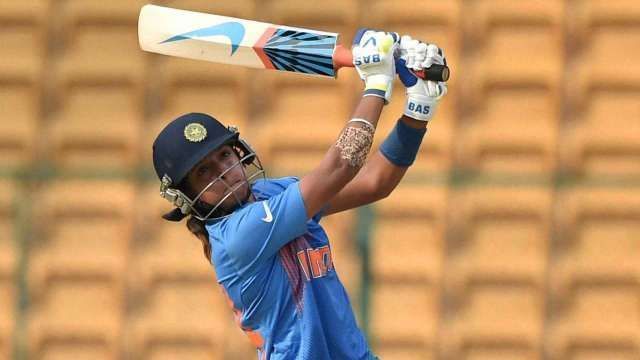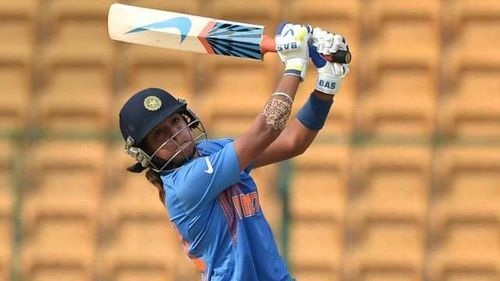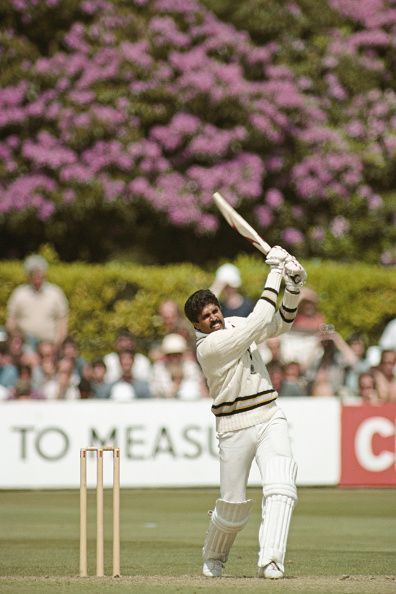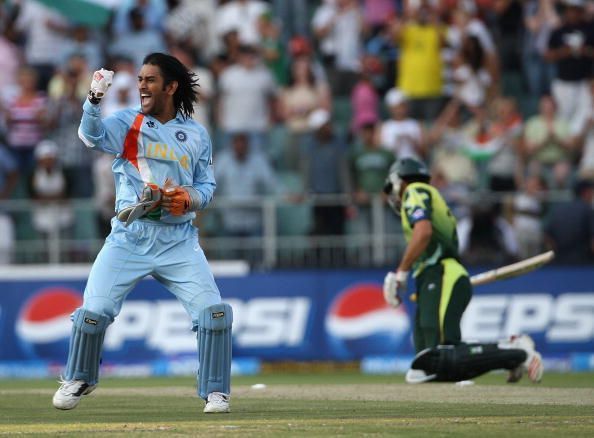
Harmanpreet Kaur is to Indian Women’s Cricket what Kapil Dev was to Indian ODI Cricket and MS Dhoni was to Indian T20 Cricket

India was tottering at 17 for 5 against Zimbabwe in the 1983 ICC World Cup. Gavaskar, Srikant, Amarnath and Sandeep Sharma were gone. With the lower order batsmen such as Roger Binny and Ravi Shastri to support him, the then Indian Captain started rebuilding the innings.
What happened afterwards is a cricketing folklore that will be retold time and time again for generations to come. Captain Kapil Dev not only resurrected the innings, but took the game away from the opposition with a whirlwind 175 studded with six sixes and sixteen boundaries.
The next best score in that innings was 24 by Syed Kirmani, India’s number 10 batsman. India finished at 266/8 in the stipulated 60 overs, which eventually proved beyond the reach of the Zimbabweans.
That innings singlehandedly changed the course of that match, the tournament and the status of ODI cricket in India. India won the 1983 World Cup. From underdogs, India had suddenly become top dogs.
With the Television boom accompanying this rise of Indian ODI cricket team in the eighties, the Indian cricket loving public took this relatively new format like fish to water.

Indian cricket, especially the ODI form, became the most popular form of entertainment for the Indian public and has more or less remained there since then. Something similar happened to the way T20 cricket became popular among Indians.
In 2007, T20 format was a new shortened version and had met with scepticism from many quarters, the way ODI cricket was derided in its initial years by cricket experts and fans alike, who had grown up on the staple diet of test cricket.
That is when the first T20 World Cup was organised in South Africa. India’s big stars – Sachin, Sourav, Dravid, etc. – stayed away from it. The captaincy of this largely young and inexperienced squad was given to a swash-buckling cricketer from the hinterland of Jharkhand. He was MS Dhoni, India’s new wicket-keeper and power hitter.
He did not set the world alight with his batting, but his fearless captaincy was a treat to watch, along with an instinctive eye for seizing the opportunities. Entrusting Joginder Sharma with bowling the last over of the World Cup final against Pakistan was one such master-stroke that won India the first ever T20 World Cup.
And just like that, T20 cricket was set on its way to becoming the most popular form in the years to come. If MS Dhoni had not led India to that famous World Cup victory, it’s safe to say there would have been no IPL or other popular T20 leagues in other countries.

In the last eighteen months, Harmanpreet Kaur has produced two magical knocks for Indian women’s cricket team in two consecutive ICC World Cups. In 2017, she single-handedly took India to World Cup final with a whirlwind 171 in Derby against Australia, reminiscent of Kapil’s 175 against Zimbabwe in 1983 World Cup.
She played that knock under Mithali Raj’s captaincy. But now as Captain, she has produced yet another superlative knock, an audacious hundred in 2018 ICC Women's World T20 against New Zealand after a similar top order collapse.
In many ways, she is similar to Kapil Dev and MS Dhoni. They are all attacking batsmen, yet cool as cucumber as captains. Kapil Dev came from Haryana, MS Dhoni from Jharkhand and Harmanpreet Kaur from Punjab.
None of these states are known for producing cricketers dime-a-dozen. Coming from relative ‘hinterlands’ in cricketing terms, they have captured the imagination of an entire nation.
Kapil Dev’s 1983 World Cup triumph made ODI cricket the most popular format among India’s cricket-loving public. MS Dhoni’s 2007 T20 World Cup victory ensured T20 was not just an experimental format, but was there to stay.
Here is hoping that Harmanpreet’s heroics with the bat and astute captaincy does something similar to the fate of Indian women’s cricket. It’s time the Indian cricket fans, experts and media take notice of the women in blue, led by the ‘superwoman’ from Punjab.